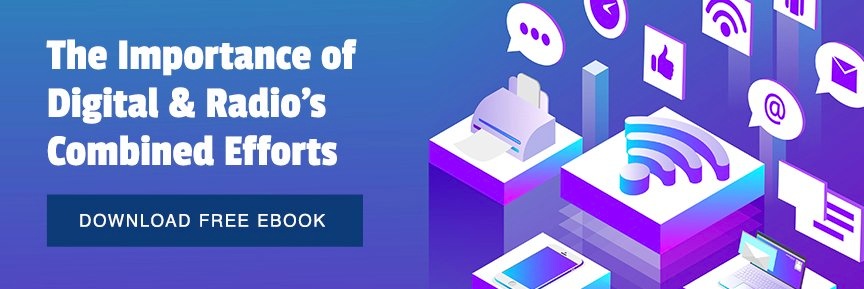Three Summer Moves Shaking Up Podcasting
With more than 700,000 shows and counting available, the podcast industry is growing at lighting speed,with one-quarter of American adults saying they listen weekly. This year, advertisers are projected to spend nearly $500 million on podcast ads and, in a race to grab market share, big media companies are buying up podcast studios. To keep pace, radio groups and local stations are ramping up their podcast efforts. With the industry moving at such a dizzying pace, the latest developments can have a major impact on your strategy and your podcasts. Here are three major moves that are sure to influence AM/FM radio, podcasters, listeners and brands alike:
Broadcasters double down on podcasts
Entercom Communications, one of the country’s largest radio station owners, just announced plans to acquire two major podcast studios, Pineapple Street Media and Cadence13 (Entercom already owned about half of the company). These established podcast studios will funnel content to the company’s Radio.com streaming service and make Entercom an instant player in podcasting. Separately, Entercom is also planning to add exclusive sports podcasts to the streaming platform. It may not be long before Entercom starts featuring podcasts and others on its AM/FM radio stations.
If Entercom opts for a “podcast-on-broadcast strategy,” it would take a page from iHeartMedia’s playbook. Also known as the “Podcast, Meet Broadcast” initiative, iHeart is using its radio assets to build awareness and sample for its podcasts. The company recently revealed a Sunday night takeover of radio stations, called “Sunday Night Podcasts,” to run a podcasts on 270 radio stations across the country. iHeart will use the time to introduce new podcasts and also to feature established hits like “The Ron Burgundy Podcast” and “Stuff You Should Know.”Also, on a handful of markets, iHeart has even reformatted several radio stations to be all-podcast channels.
Using broadcast stations to increase exposure for your podcasts -- whether talking about them on-air or broadcasting full episodes -- is a brilliant way to leverage your station’s radio audience and promotional capabilities to build your podcasts.
Google delivers audio links
In another major development that will boost podcast discovery, Google recently introduced podcasts in its search results. This first time that podcasts have been delivered as native search links in Google, allowing users to navigate to audio in just one step. Podcasters have previously relied on show descriptions and podcast transcription to appear in searches and then, through those links, direct users to their audio content. By removing that obstacle, Google is making it faster for users to find podcasts and easier to listen. Quick searches for “travel podcast” and “NFL podcast” turned up dozens of results that lead directly to the audio, although they lead to the Google’s podcast player, rather than third-party podcast platforms or the publisher’s site. (Eventually, Google says publishers will be able to specify other listening platforms.)
Google plans to expand podcast search capability to Google Home and Google Assistant, allowing users to find podcasts via voice search. Google also plans to eliminate the need to include the term “podcast” in searches. Since discovery is one of the biggest obstacles to growing podcast awareness and usage, Google’s new search capabilities are sure to elevate podcast listening and raise the medium’s profile.
Apple changes podcast categories
Earlier this summer, Apple unveiled new categories for its podcast app, the most-used podcast listening platform. With some 700,000 podcasts in the Apple podcast listings, it can be daunting for consumers to explore the app for shows. To streamline the catalog, Apple expanded the number of lead categories and added new subcategories.
By revamping its listings, Apple is recognizing the industry’s expansive offerings and elevating the most popular genres, including a new category for red-hot true crime. For example, within “Arts” there are now seven sub-genres, including books, food and design. The “Fiction” genre spotlights three new sub-categories that are popular with listeners: comedy, drama and science fiction. To make the directory more intuitive, Apple also renamed some categories, like “Sports & Recreation” is now just “Sports”.
Even as companies like Spotify, Pandora and Stitcher beginning to challenge Apple’s dominance in podcast listening, Apple remains most users go-to platform and making the app more user friendly will help maintain that position. For radio and podcasters, anything that makes it easier for users to discover and download podcasts is good for business.
***
Amid all these changes, radio stations are fine-tuning their own podcast strategies, launching original shows and developing branded podcasts for clients. At both the national and local level, marketers are clamoring to get involved with podcasts, and this is fertile ground for local radio to be a go-to source for podcast advertising in their markets. Anything that makes it easier for your radio audience to become podcast listeners is good for business, both now and in the future.

